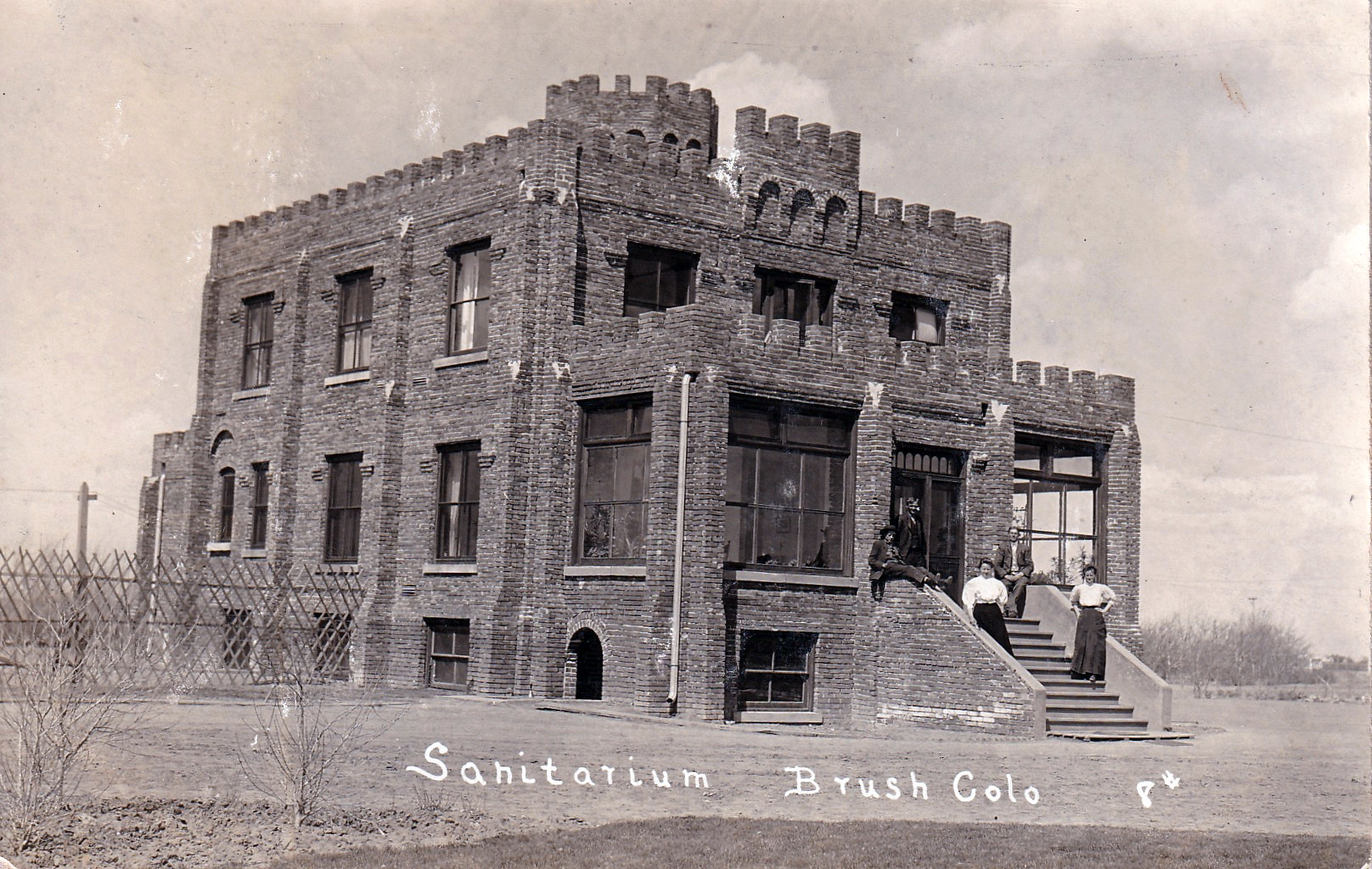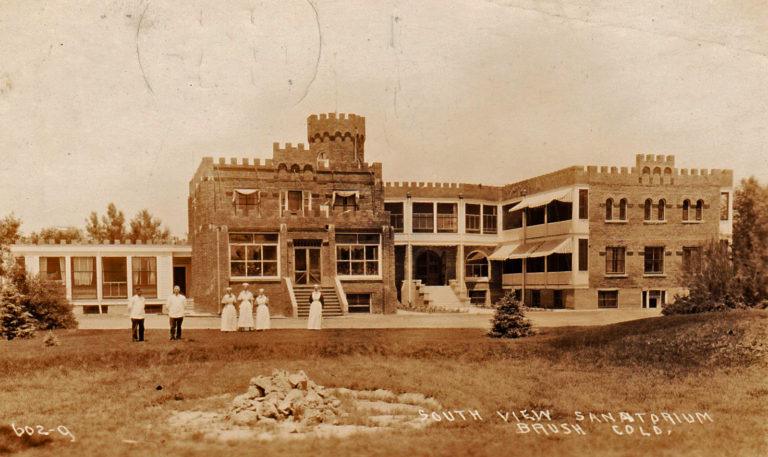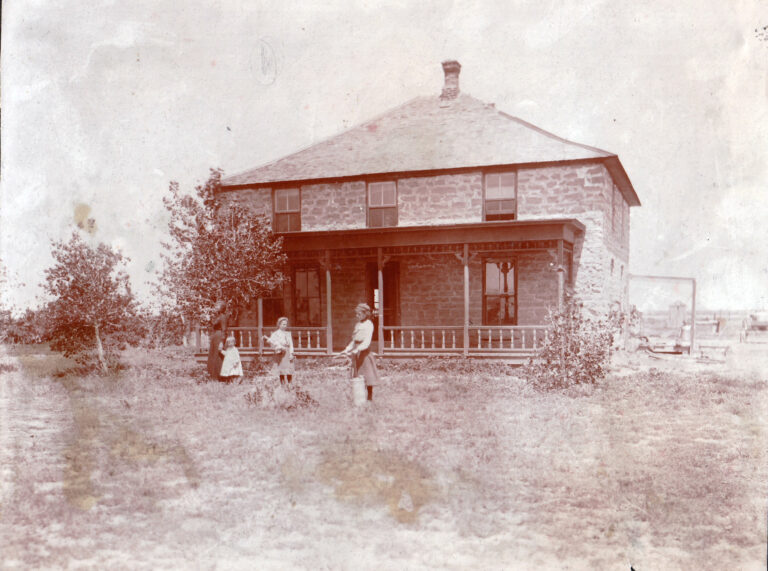The founder of the Eben Ezer Sanitarium was the Reverend Jens Madsen, who was born in Denmark in 1869. In 1893, Madsen emigrated to the United States and entered the Danish Lutheran Trinity Seminary in Blair, Nebraska. On October 19, 1902, he was ordained by the Reverend G. B. Christiansen, President of the United Evangelical Danish Lutheran Church in Hampton, Nebraska. Madsen went on to design a church in Potter, Nebraska, and in September of 1903 he and his fiancé, Ane Marie Neilsen, also from Denmark, were married there.
Moving to Brush with Ane in 1903, the Reverend Madsen’s goal was to create “a Christian home in the west for consumptives.” (The term “consumptive” refers to a wasting disease, especially pulmonary tuberculosis.) The majority of Lutheran settlers in the Brush area were, like the Madsen’s, of Danish background, and, in ministering to them, Jens and Ane created a strong bond with them. The Madsen’s and their supporters would organize and incorporate the “Lutheran Deaconess Institute and Sanitarium Auxiliary.” A group of eleven men served as trustees and wrote the constitution and by-laws for the organization, which would be named “Eben Ezer,” a Hebrew term from the Old Testament meaning “stone of help,” denoting “a place in which the Lord has helped us.” Thirty-five acres for this establishment would be purchased near the railroad track in Brush.
The Reverend and Mrs. Madsen first lived in a small house in Brush, but that didn’t stop them from taking in Eben Ezer’s first patient, a person from Oconto, Wisconsin. In the fall of 1905, the Madsen’s moved to a larger house in Brush. Because the quality of water at that site was better, the Madsen’s built a windmill to pump water and erected the first of a number of tent houses at that location. The reverend and others also built a 12 X 12 foot bathhouse, installing a shower, sink and toilet, thereby creating what was reportedly the first bathroom in Brush. The rate for Eben Ezer’s patients at that time was $5.00 a week, which included a room, three meals a day, nursing care, use of the bathhouse, and a weekly visit from the doctor.
The first house built on Eben Ezer land was completed in March of 1906 and named “Nazareth.” It could accommodate eight people. In November of 1906, the cornerstone was laid for the building featured in this photo. It would be named “Bethesda.” As you can see in a photo from my blog at https://jacksoldphotosofcolorado.com/1031-2/ significant additions had been made to “Bethesda” by 1918. I like the way they retained the ziggurat roofline in the newer strucutures.
Eben Ezer appears to have thrived. A 1915 article in the “Morgan County Republican” newspaper in Brush reported that the beautiful grounds at Eben Ezer gave “employment and needed exercise to the poor consumptive inmates…and also to the aged who are there.”
Eben Ezer is now the Eben Ezer Lutheran Care Center in Brush, which is affiliated with the Evangelical Lutheran Church of America (see https://www.ebenezer-cares.org/index.php?lang=en ). I was unable to find any information to indicate that “Bethesda” or the other early original Eben Ezer structures are still standing. An exception is the Eben Ezer cemetery, and it is there that Jens and Ane Madsen are buried. Jens died in 1946, and Ane died in 1948.
REFERENCES:
- “Brush News Tribune, “July 17, 1912, “Founding Family Visits Madsen Exhibit,” by Katie Collins at http://www.brushnewstribune.com/ci_21093583/founding-family-visits-madsen-exhibit
- Brush Tribune, Volume 8, Number 27, April 29, 1904, at https://www.coloradohistoricnewspapers.org
- “From the Beginning,” Eben Ezer Lutheran Care Center at https://ebenezer.org/from-the-beginning/
- Google.com dictionary
- “Lutheran Deaconess Institute and Sanatorium Auxiliary,” MAJOR BIBLIOGRAPHICAL REFERENCES, National Park Service at https://npgallery.nps.gov/GetAsset/6823d3d9-1df1-4d8c-b727-4e3c81d112e8
- “Morgan County Republican,” Volume 15, Number 41, October 8, 1915 (at www.coloradohistoricnewspapers.org )
- U.S., Find a Grave Index at https://www.findagrave.com/memorial/25937482/jens-madsen and https://www.findagrave.com/memorial/25937504/ane-marie-madsen
- Website for Eben Ezer Lutheran Care Center, “History – The Beginning,” at
https://www.ebenezer-cares.org/index.php?option=com_blankcomponent&view=default&Itemid=284&lang=en
- Wikipedia at https://en.wikipedia.org/wiki/Eben-Ezer
- 1920 Census (www.ancestry.com)




